Difference between revisions of "Genuine leather"
m (→Genuine leather) |
m (→Special features of leather shoes) |
||
| Line 57: | Line 57: | ||
== Special features of [[leather shoes]] == | == Special features of [[leather shoes]] == | ||
| − | By law in the European Union, there are rules on the exact marking of materials in [[leather shoes|shoes]]. Manufacturers of shoes (sandals, closed shoes, [[leather boots|boots]]) are | + | By law in the European Union, there are rules on the exact marking of materials in [[leather shoes|shoes]]. Manufacturers of shoes (sandals, closed shoes, [[leather boots|boots]]) are under obligation to indicate the processed materials on sale. In text form or as pictograms. |
| Line 79: | Line 79: | ||
* ''Image 2:'' '''Lining and insole''': The upper and lower materials inside the shoe.'' | * ''Image 2:'' '''Lining and insole''': The upper and lower materials inside the shoe.'' | ||
| − | * ''Image 3'': '''Sole''': The | + | * ''Image 3'': '''Sole''': The outer sole is the contact material to the floor which wears off. The specified material must make up 80% of the complete volume and surface of the materials processed. If several materials are processed (e.g. leather and textile as upper material), the main materials must be specified.'' |
| Line 89: | Line 89: | ||
[[bild:fibel33.jpg|100px]] | [[bild:fibel33.jpg|100px]] | ||
| − | ''Image 1:'' '''[[Leather]]''': "Leather" | + | ''Image 1:'' '''[[Leather]]''': "Leather" is from hides and skins with the original fibre structure intact. Materials which are produced from dissolved or crushed leather fibres and processed into sheets are not "[[Leather|leather]]". Any colour film or layer applied on the surface of leather cannot be thicker than 0.15 mm. |
''Image 2:'' '''[[Coated leather - Laminated leather|Coated leather]]''': Coated leather is leather, where a painting or a film is thicker than 0.15 mm, but not more than 1/3 of the total thickness. If the coating is greater than 1/3, then it must be described as synthetic leather. | ''Image 2:'' '''[[Coated leather - Laminated leather|Coated leather]]''': Coated leather is leather, where a painting or a film is thicker than 0.15 mm, but not more than 1/3 of the total thickness. If the coating is greater than 1/3, then it must be described as synthetic leather. | ||
| Line 95: | Line 95: | ||
''Image 3:'' '''Textile''': Textiles are all natural and synthetic textiles.'' | ''Image 3:'' '''Textile''': Textiles are all natural and synthetic textiles.'' | ||
| − | ''Image 4:'' '''Other Material''': Other materials are all materials that are not covered by the upper groups. For example, rubber or plastic for an | + | ''Image 4:'' '''Other Material''': Other materials are all materials that are not covered by the upper groups. For example, rubber or plastic for an outer sole.'' |
| Line 125: | Line 125: | ||
<werbebanner /> | <werbebanner /> | ||
| − | |||
== Additional information == | == Additional information == | ||
Revision as of 16:16, 22 February 2017
Contents
Genuine leather
End users often don’t know if the items they purchased are made from "genuine leather" and, if it is leather (see What materials can be called leather?), what kind of leather it is. It would be helpful to provide clear identification of the types of leather and also to know the correct way to clean and maintain it.
Leather is produced all over the world according to different standards. Therefore, it would be desirable if detailed information like animal species, the country of origin and the place of tanning were also provided. This would create transparency and also give the consumer better options to be able to distinguish leather quality.
Unfortunately, there is no such comprehensive marking of leather objects for end users.
Typical labelling of leather products.
The leather skin symbol
The shape of an animal skin is commonly used as a symbol for leather products and for leather-related themes and businesses. It is often used as an ornamental element in brochures, company logos, product labels or websites. Furthermore, manufacturers of leather clothing and leather shoes use the symbol with "genuine leather" written on it to point out that the product satisfies the requirements for the genuine leather label and does not consist of other materials.
Extreme examples for false declarations. It is leatherette with leather fibres glued on the reverse.
Use of the leather logo
The leather logo is not a protected symbol. Anyone can design and use a leather symbol. A copy of an existing leather logo is not permitted. Therefore, an own leather symbol should always be designed to avoid disputes.
Symbol for the identification of a product made of genuine leather. - Leather logo of the Lederzentrum GmbH. - Labelling for leather shoes.
Special features of leather shoes
By law in the European Union, there are rules on the exact marking of materials in shoes. Manufacturers of shoes (sandals, closed shoes, boots) are under obligation to indicate the processed materials on sale. In text form or as pictograms.
Mandatory labelling in footwear.
The following components of a shoe must be marked regarding to the used material:
- Image 1: Upper: The upper outer material.
- Image 2: Lining and insole: The upper and lower materials inside the shoe.
- Image 3: Sole: The outer sole is the contact material to the floor which wears off. The specified material must make up 80% of the complete volume and surface of the materials processed. If several materials are processed (e.g. leather and textile as upper material), the main materials must be specified.
The following materials are distinguished:
Image 1: Leather: "Leather" is from hides and skins with the original fibre structure intact. Materials which are produced from dissolved or crushed leather fibres and processed into sheets are not "leather". Any colour film or layer applied on the surface of leather cannot be thicker than 0.15 mm.
Image 2: Coated leather: Coated leather is leather, where a painting or a film is thicker than 0.15 mm, but not more than 1/3 of the total thickness. If the coating is greater than 1/3, then it must be described as synthetic leather.
Image 3: Textile: Textiles are all natural and synthetic textiles.
Image 4: Other Material: Other materials are all materials that are not covered by the upper groups. For example, rubber or plastic for an outer sole.
Leather shoe with leather on all surfaces.
Leather sole of bovine leather. Only the leather sole is marked, because the regulation for the characteristics of the residual materials has not yet existed when producing this shoe.
What at first glance looks like a typical sneaker with suede as upper leather is revealed only by means of the symbols as a synthetic fibre.
Additional information







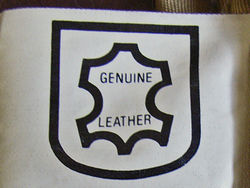
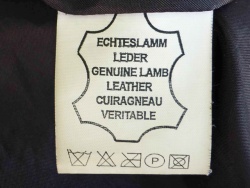

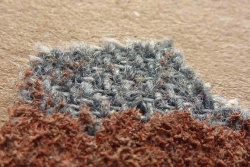



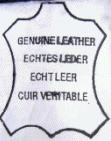
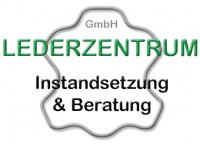

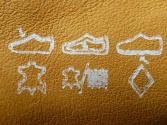

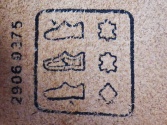






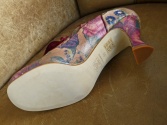
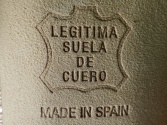
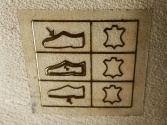
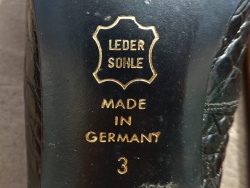
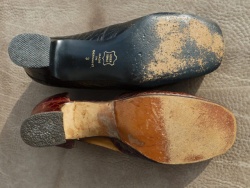
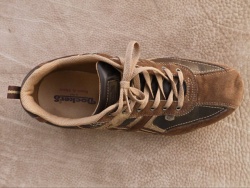
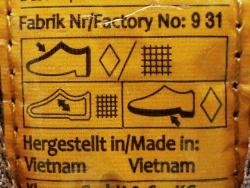

 a kotori web solution
a kotori web solution